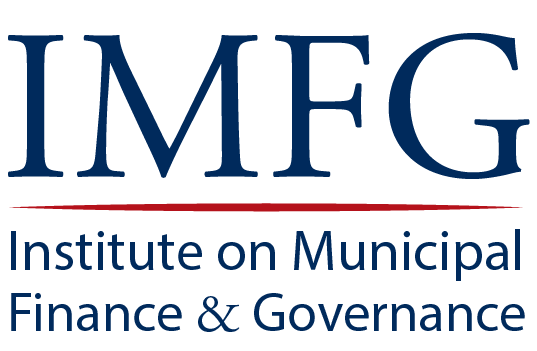Ending the Incumbency Epidemic
by Sevaun Palvetzian and Jodie Rawn
In 2016, Milton Mayor Gordon Krantz overtook Hazel McCallion as the longest-serving mayor in Ontario and the longest-serving mayor of a major Canadian municipality. With nearly 40 years in office, he is among the longest-serving politicians in Canada – a list that includes prime ministers Wilfrid Laurier (44 years) and John Diefenbaker (39 years), former federal MP Herb Gray (39 years), and John Hamlyn, who has spent more than 50 years as the mayor of Crow Head, Newfoundland.
Forty years in office is a testament to longevity, but let’s put that period into perspective. Forty years ago, personal computers were just being invented, you could smoke on airplanes, and Canada’s Charter of Rights and Freedoms had not yet been signed into law. More importantly, cities couldn’t foresee the incredible population growth or shifting demographics on the horizon, or the way technology and climate change would alter traditional jurisdictional boundaries.
The fact is – a lot changes in 40 years. So why don’t our elected officials?
If the 2018 Ontario election is any indication, longevity in politics is starting to wear thin among voters. Ontarians opted for change, bringing a new party to power and sending 73 rookie MPPs to Queen’s Park (representing 60 percent of the provincial legislature). The 2018 election campaign also saw widespread weariness directed towards the major parties. An Angus Reid Institute survey released a week before the election found that 50 percent of respondents were motivated to vote for a particular party only because they weren’t happy with the alternatives.
Does longevity in politics lead to better outcomes? Or does it do a disservice to democracy by hindering new ideas and discouraging new voices from entering the political ring? It’s time to shake up the electoral status quo.
The big idea? Limit municipal councillors to a maximum of two five-year terms.
At the municipal level in Ontario, there are no term limits on political office. Politicians can serve as many four-year terms as they want – provided they are elected, of course. And while being able to elect and be elected is a fundamental right, there’s a case to be made that a lack of term limits does more harm than good.
In the 2014 municipal election, 36 of Toronto’s 37 incumbents were re-elected. That same year, every single incumbent that ran for Hamilton Council was re-elected. On Toronto City Council, one councillor (Maria Augimeri) has been in office for more than 30 years and the four longest-serving councillors have spent a combined 100+ years on the job.
When our decision-making bodies remain static, we deprive citizens of the opportunity for new policymakers to insert fresh ideas and solutions to address our region’s problems. We also perpetuate systems of inequality that prevent decision-making bodies from reflecting the populations they serve.
For example, Toronto’s current City Council is 90 percent white, with only one racialized woman. In a region in which nearly half of the population identifies as racialized, how can a largely homogenous Council make decisions and policies in the best interest of the citizens it represents?
A clean slate after two terms would allow a new group of community leaders to contribute their skills, perspectives, and lived experience to the democratic process. Having incumbents run term after term deters many diverse candidates such as women and racialized people from running. Imposing two-term limits would open up opportunities to a new group of people and inject diversity into our decision-making bodies. Our cities thrive when the gap between decision-makers and citizens is closed.
Having incumbents run term after term can also have a negative effect on voters and how closely they pay attention to local elections. In a study of the 2014 Toronto municipal elections, voters from wards in which an incumbent was running were “less attentive” to the election and local issues, a fact that contributed to the incumbent’s success.
In communities where long-time incumbents run, new candidates are less likely to put their names forward. Why invest time and money into a campaign with such slim chances of success? Putting your name on the ballot is challenging enough. Knowing you’re up against an incumbent keeps out many potential candidates.
With less choice on the ballot, candidates aren’t forced to compete with one another to win over voters. Having a larger pool of competitive candidates would push each candidate to develop stronger policy platforms and work harder to woo voters, leading to stronger councillors at City Hall.
Moreover, someone who has been in the same role for too long may lose touch with those they were elected to serve. While many councillors win re-election year after year because of their commitment to community and ability to drive significant local change, some develop a feeling of security brought on by political influence gained over years of being in office and knowing the ins and outs of the system.
At all levels, government is complex, with deeply entrenched systems and processes. Getting things done can be a challenging, time-intensive process – particularly for big-ticket items such as billion-dollar infrastructure upgrades or transit plans spanning multiple communities. Our current four-year election cycle limits the time available for decision making and planning by councillors. Even a routine environmental assessment may take a full term to complete.
Implementing two-term maximums and moving from four-year to five-year election cycles would give councillors adequate time to learn the ropes, encourage a longer-term vision, and allow for better decision making while still creating opportunity for impact.
Aside from being new to our Canadian system, term limits could be a catalyst for stronger civic engagement in communities, with minimal financial burden and maximum payoff. Term limits would allow for more diversity in our council chambers and provide an opportunity to re-engage an electorate that is increasingly disengaged.
In the most recent Edelman Trust Barometer, government sat last on a list of trusted public institutions. Without trust, democracy rots. To set cities up for long-term success, we require strong democratic institutions that represent the populations they serve and respond to the dynamic and changing world we live in. Term limits can help us get there.

Sevaun Palvetzian is one of Canada’s leading experts on civic engagement, and CEO of CivicAction – an organization committed to building inclusive cities and levelling the playing field of opportunity. A voice of influence and advocacy on urban issues, she sits on a number of boards and councils and has consistently championed new voices at tables of influence in her roles with the Ontario Public Service, the University of Toronto, and Presidential Classroom.

Jodie Rawn is the inaugural Managing Director of the CivicAction Leadership Foundation – a first-of-its-kind foundation that delivers world-class leadership experiences to diverse rising leaders in the Greater Toronto and Hamilton Area. Before joining CivicAction, she held progressively senior roles in the Ontario government with a focus on communications, strategy, organizational transformation, and leadership development.
